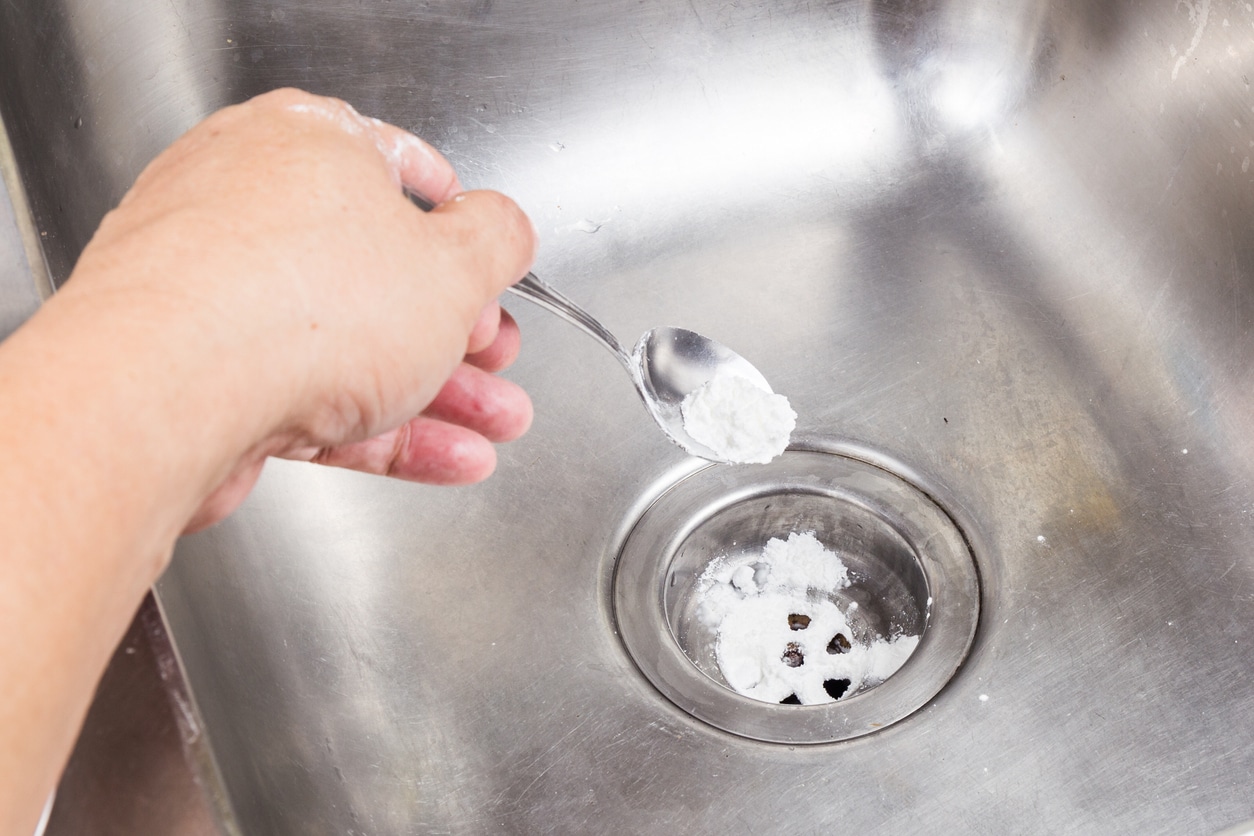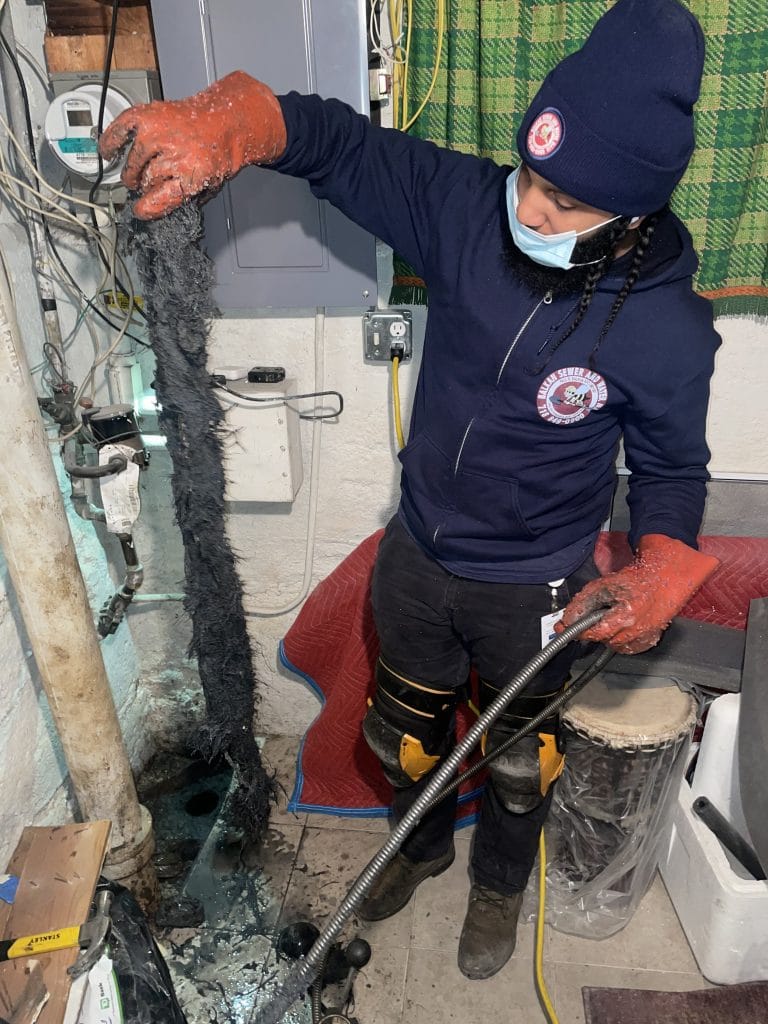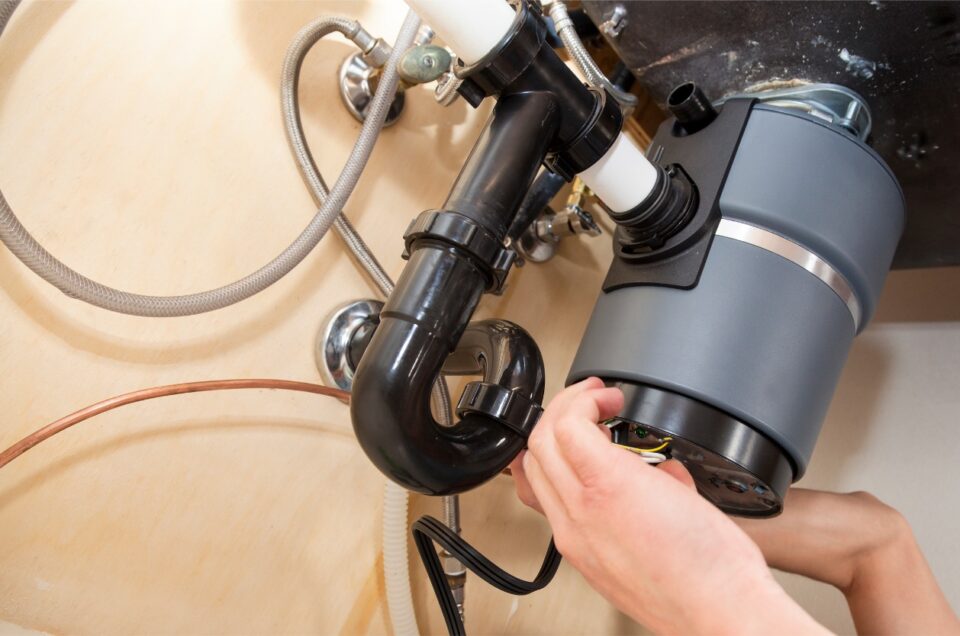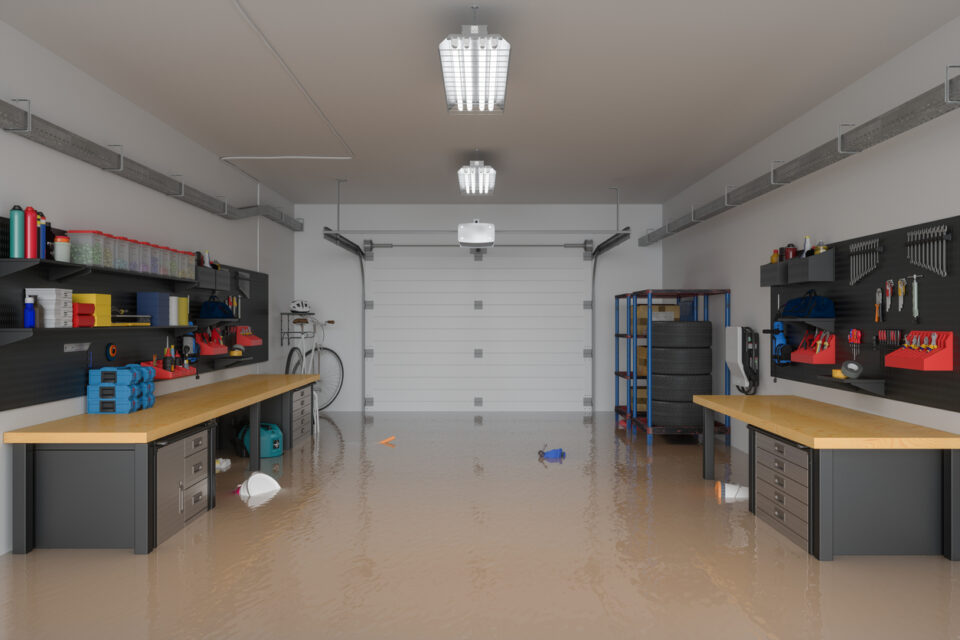Are you dealing with a clogged drain in the home? Depending on how severe the clog is, it could be a minor nuisance, or it could be a major problem. Either way, you want it gone! If you’re researching “home remedies” for a clogged drain, odds are you’ll come across the combo of baking soda and vinegar.
Mixing those two products together certainly works when it comes to cleaning — but what about removing a stubborn drain? Can you clean your drain with baking soda and vinegar instead of calling a professional drain cleaning service?
Let’s talk about the types of projects that baking soda and vinegar are well-suited for. Let’s also get into whether baking soda and vinegar are actually effective at clearing a clogged drain.
How Baking Soda and Vinegar Interact with Each Other
Baking soda and vinegar lie on opposite sides of the pH scale (a scale of 0-14 that measures how acidic or alkaline chemicals are, with pure water being a neutral 7). Vinegar is a 3 on the pH scale (very acidic), whereas baking soda is a 9 (significantly alkaline).
When you combine baking soda and vinegar together, the resulting mixture produces carbon dioxide gas. This can even create quite a bit of pressure within a closed system (like a plastic bottle, for example). Note that most drain systems are not closed systems, there are branch lines, vent lines, overflows, etc. However, for use around the house, this combination is most effective as a cleaning agent.
The Dynamic Duo of Cleaning
Baking soda and vinegar make a great team when it comes to cleaning up grit, grime, and other nasty stuff from your home’s surfaces. This is because each substance has its own strengths as a cleaning agent.
Baking soda can dissolve organic compounds like dirt and food particles, while vinegar can break down minerals from hard water, soap scum, and similar substances. However, grease and hair (the two primary culprits causing clogs) are another story entirely.
In addition, when you mix the two together, the carbon dioxide that they release can help “lift” the mess off the surface you’re trying to clean, whether it’s a kitchen counter, a bathtub, or a tiled floor.
Here are just a few ways to use vinegar and baking soda for your next cleaning project around the house:
- Remove stains from hard tap water by covering the area with a vinegar-soaked towel. After an hour or two, remove the towel and scrub the stain off with a mixture of baking soda and water.
- Clean your kitchen sink and eliminate unpleasant odors at the same time. Mix one part baking soda with two parts vinegar, and then scrub the base and drain of your sink.
- Add 1/2 cup baking soda to your laundry detergent when first starting your washing machine. Then add one cup of vinegar during the rinse cycle. This will help eliminate patches of mildew and mold on your clothes.
Does the Baking Soda and Vinegar Combo Dissolve Grease?
The short answer is no, not really. For one thing, combining baking soda with vinegar in equal amounts tends to “cancel out” the unique properties of each product. More importantly, the chemical reaction that results from mixing them together produces water with a tiny amount of salt in it, rather than a powerful drain cleaning agent.
Finally, neither baking soda nor vinegar are surfactants. These are chemical agents that reduce the “bond” between a surface and the substance that’s attached to it. This means they’re not effective at dispersing grease in the same way that detergents and other cleaning agents are. (This also explains why baking soda and vinegar don’t do a great job at loosening hair clogs, either.)
The fact is that boiling water used alone (never place boiling water inside plastic drain lines) may be more effective than vinegar and baking soda.
Can Baking Soda and Vinegar Create Enough Pressure to Blow Out a Sink Clog?
It’s true that the chemical reaction of mixing vinegar and baking soda together creates a certain amount of pressure. You can see that quite clearly when the mixture begins to foam and fizz. However, that pressure is not enough to blow out a sink clog.
The reason why the baking soda and vinegar reaction can’t produce enough pressure to forcibly remove a clog is that your sink is not part of a closed system. In other words, even if the clog is bad and your sink is stopped up, the drain is still not airtight. Any carbon dioxide created by the baking soda/vinegar mixture would lose pressure and escape through small holes in the clog or your plumbing’s ventilation system.
A Lighthearted Live Demonstration
Are There Alternatives to Clearing a Clogged Drain
Fortunately, there are other options that you can explore when you need to remove a tough clog.
For example, if you are dealing with a stubborn sink clog in the middle of your P-trap, you can manually take the trap apart, clean it out, and reassemble it within about 10-15 minutes (as long as you have the right tools). You can try to loosen up the clog with other solutions, like hot water and detergent. Of course, you can also buy a professional drain cleaning liquid for the more stubborn grease and hair clogs.
Arm & Hammer Talks About Baking Soda and Vinegar As A Drain Cleaner
Your kitchen is the most used room in your home, and there are many surfaces and appliances to keep clean. Whether you’re doing maintenance or deep cleaning, you’ll find a trusted helper in baking soda.
Cleaning the Sink Drain
To keep drains fresh, regularly sprinkle a little baking soda in them while running hot water.
For a deeper clean, a slow-moving drain or mild clog, reach for the baking soda and white vinegar. Here’s how:
- Pour a (tea)pot of boiling hot water down your drain.
- Dump in about 1/2 cup ARM & HAMMER™ Baking Soda. Let that sit for a 3-5 minutes.
- Then, pour a mixture of 1 cup vinegar and 1 cup very hot water down the drain, on top of the baking soda.
- If you have a sink overflow, cover the drain overflow and let it sit for 5-10 minutes. If you don’t have an overflow outlet built into the sink, the vinegar and baking soda reaction should work fine. An overflow outlet left uncovered doesn’t allow the pressure of the gas to build up.
- Flush again with a pot of boiling water.
Although-
Do NOT pour boiling water down your sink or toilet.
While it’s probably okay to dump boiling water in the sink when your pipes are clear, a clog will trap the water in the pipe. This can melt PVC piping and pipe seals, causing serious damage.
From – https://www.armandhammer.com/articles/baking-soda-cleaning-hacks
NOTE: Even Arm & Hammer limits the use of baking soda and vinegar for clearing drain clog to ” a slow-moving drain or mild clog”.
Balkan Sewer & Drain Cleaning Can Help
Sometimes, despite your best efforts, a clogged drain may still cause you trouble. Maybe you’ve tried baking soda and vinegar, hot water and detergent, and even an over-the-counter drain cleaner — all to no avail.
If the clog is that stubborn, you may need to call in some reinforcements. That’s where our team at Balkan Sewer & Drain Cleaning comes into the picture. Here are just a few reasons to choose us:
- Experience. Our family has been removing clogs for the residents of New York City since 1952. With almost 70 years of experience and over 70,000 customers under our belt, we know how to remove even the toughest of clogs.
- Reliability. We pride ourselves on our fast response time — 4 hours or less! We are also available 24/7 for emergency situations.
- Affordability. We only charge highly competitive, reasonable rates for our services. Furthermore, our rates remain the same for after-hours, weekend, and holiday service.
- Quality. We have a reputation for delivering high-quality service no matter the job type, location, or difficulty level. There’s a reason why tens of thousands of New Yorkers trust us to fix their sewer, water main, and drain issues!
If home remedies don’t work, and you want to get rid of a clogged drain without any more hassle, reach out to Balkan Sewer & Drain Cleaning today. We’ll do what we do best: quickly and affordably clear your clog!




